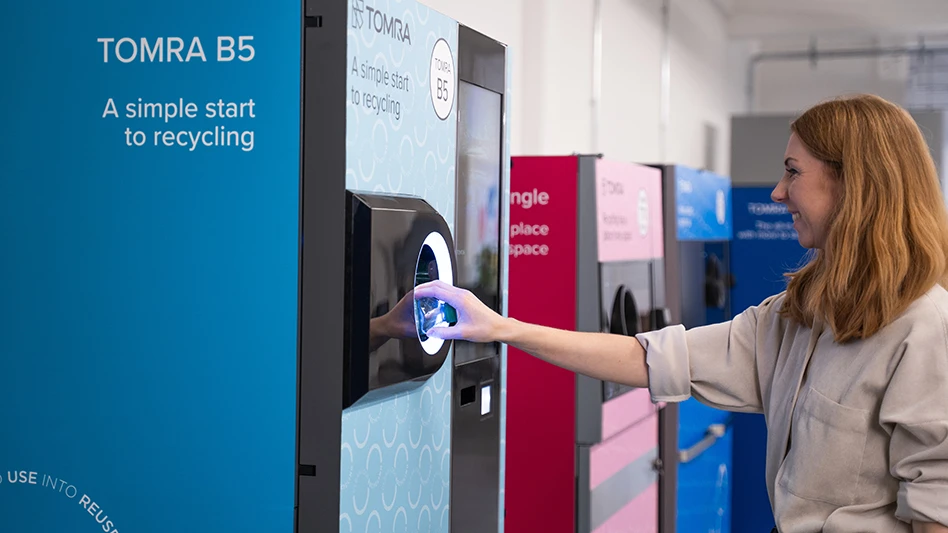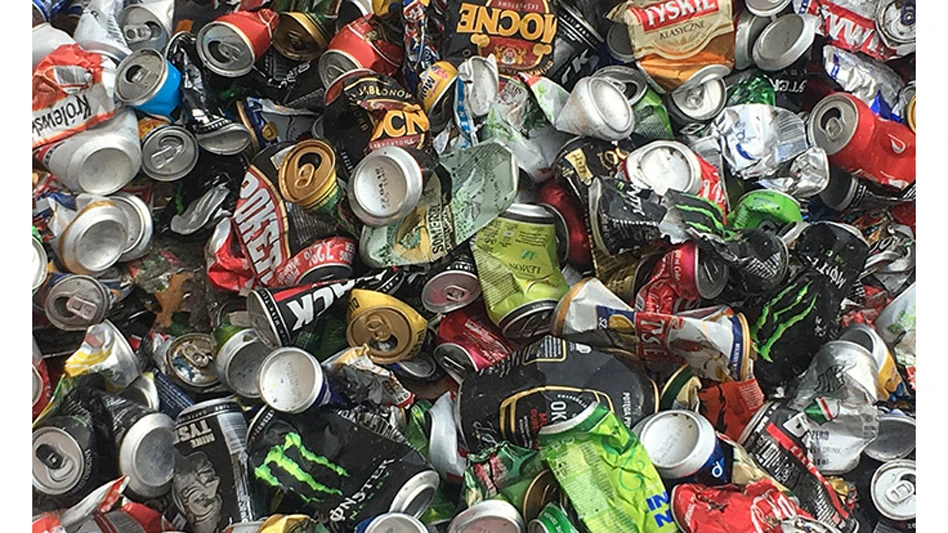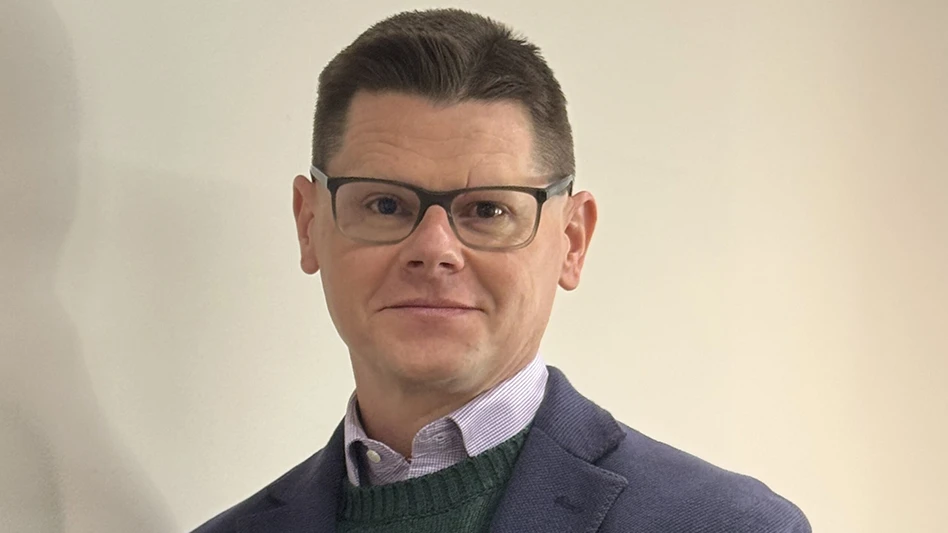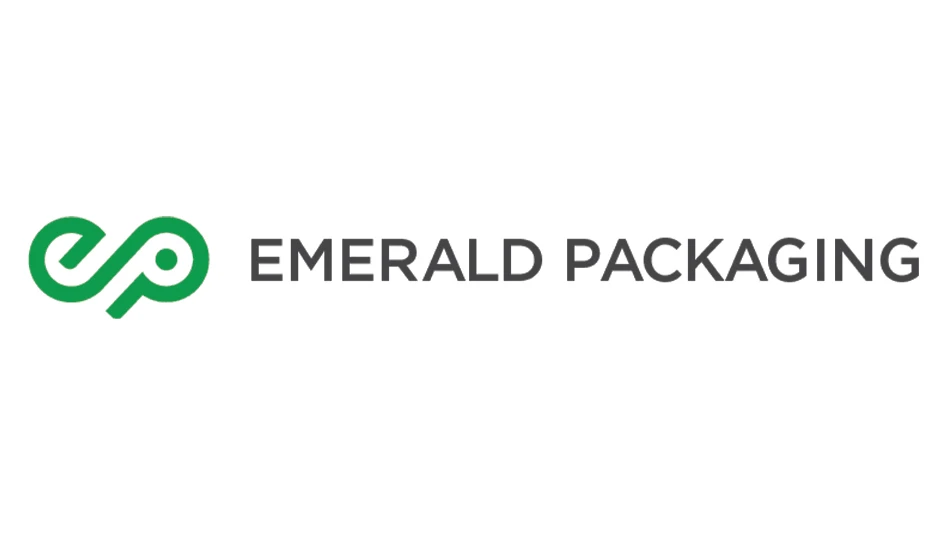
Photo courtesy of Microsoft
Microsoft has debuted its Ocean Plastic Mouse, the exterior shell of which contains 20 percent mechanically recycled ocean plastic. The new product is the result of the tech company’s collaboration with SABIC, a global leader in the chemical industry.
Mahari Tjahjadi, Electrical and Electronic Solutions segment leader at SABIC, who is based in Shanghai for the leading petrochemical company, says Microsoft was interested in using ocean plastics. He adds that Microsoft liked the immediate impact of recovering plastic from the ocean for this first effort, but the company also is looking at using ocean-bound plastics as well as traditional postconsumer recycled plastics in its products.

SABIC says ocean plastic has been certified by a third party as recovered from any ocean or ocean-feeding waterways or where it washed ashore from these locations.
According to SABIC, Microsoft began the project with the objective of creating a plastic resin made from at least 10 percent mechanically recycled ocean plastic as part of its commitment to achieve zero waste by 2030. The Microsoft design team collaborated with technologists at SABIC to provide feedback on prototypes made with the new resin. This effort resulted in several rounds of reformulation prior to arriving at a final version that exceeded Microsoft’s initial goal to instead contain 20 percent recycled ocean plastic by weight in its external casing, or “shell.”
SABIC is providing a new Xenoy resin for Microsoft’s use that contains 20 percent ocean plastic as part of SABIC’s Trucircle portfolio and services. Based on a resin grade comprised of 20 percent recycled content, for every 1,000 tons of product containing recycled ocean-plastic Xenoy PC/PET (polycarbonate/polyethylene terephthalate) compound, an equivalent of 24 million single-use 0.5-liter PET water bottles is removed from the ocean, ocean-feeding waterways or ocean-adjacent shores, SABIC says.
Tjahjadi says SABIC needed to ensure that suppliers of the ocean plastic were able to provide batch-to-batch consistency in the volume that the project necessitates. “Consistency is critical,” he adds, and SABIC had to put in “quite a bit of an effort” to ensure this.
The company’s suppliers of the ocean plastics are based in Asian countries, he says, and SABIC is producing the plastic for the project in China.
With the project, Tjahjadi says, SABIC and Microsoft were looking to optimize the amount of recycled content in the mouse while consistently achieving the properties required in the application.
Frank Kuijpers, SABIC general manager Corporate Sustainability, says, “With the application and volumes associated with that, [mechanical recycling] seemed to be an ideal combination.”
“We found a sweet spot where we can do this via mechanical recycling,” Tjajadi adds.
He says chemical recycling also is of interest to Microsoft, which is exploring other projects with SABIC.
SABIC’s Xenoy resins combine PC with a semicrystalline resin, such as PET, Tjajadi says. The resins in the Xenoy resin line are suitable for use in applications that require chemical resistance, including health care, automotive and home appliances in addition to personal electronics.
Thajadi says SABIC and Microsoft are exploring closed-loop recycling options for the company’s products. “The thought is very much in their mind and in ours,” he says, noting that logistics surrounding collection are a primary challenge.
SABIC says its project with Microsoft provides a blueprint to demonstrate to the broader industry sector that recycling and reusing ocean plastics is achievable when value chain partners use their knowledge and expertise and work together.
Abdullah Al-Otaibi, ETP & Market Solution General Manager at SABIC, says, “Our collaboration with Microsoft represents an exciting development in recycling and reusing ocean plastic to create high-quality consumer electronic products that meet Microsoft’s high-performance expectations while also playing a role in cleaning up the world’s oceans.”
Kuijpers says, “This addition to our Trucircle portfolio is another demonstration of SABIC’s collaboration with the value chain to help create new value from used plastics. By creating more sustainable materials and forging new collaborations, we are setting an example for the industry in how we can transform difficult-to-recycle materials such as ocean plastic into innovative products that can meet the high-quality demands of our customers.”
“As part of our commitment to the reduction of waste, we set out to prove the viability of recycled ocean plastic as a material for use in consumer electronics,” says Donna Warton, vice president of Supply Chain and Sustainability at Microsoft, Redmond, Washington. “The Microsoft Ocean Plastic Mouse, with an outer shell made with 20 percent recycled ocean plastic, is the first consumer electronics product made with this Xenoy resin. We are proud of the collaboration with SABIC that created this new resin from a challenging material that would otherwise remain in the ocean as waste. We hope that this first step on recycled ocean plastic will spur further action in our industry and are excited for customers to be able to experience the product.”
The collaboration builds on SABIC’s announcement in April that it had developed of ocean-bound plastics. These ocean and ocean-bound materials form part of SABIC’s Trucircle portfolio of products and services, including design for recyclability, mechanically recycled products, certified circular products from recycling, certified renewables products from bio-based feedstock and closed-loop initiatives to recycle plastic back into high-quality applications and help prevent valuable used plastics from becoming waste.
Latest from Recycling Today
- ReMA urges open intra-North American scrap trade
- Axium awarded by regional organization
- China to introduce steel export quotas
- Thyssenkrupp idles capacity in Europe
- Phoenix Technologies closes Ohio rPET facility
- EPA selects 2 governments in Pennsylvania to receive recycling, waste grants
- NWRA Florida Chapter announces 2025 Legislative Champion Awards
- Goldman Sachs Research: Copper prices to decline in 2026





